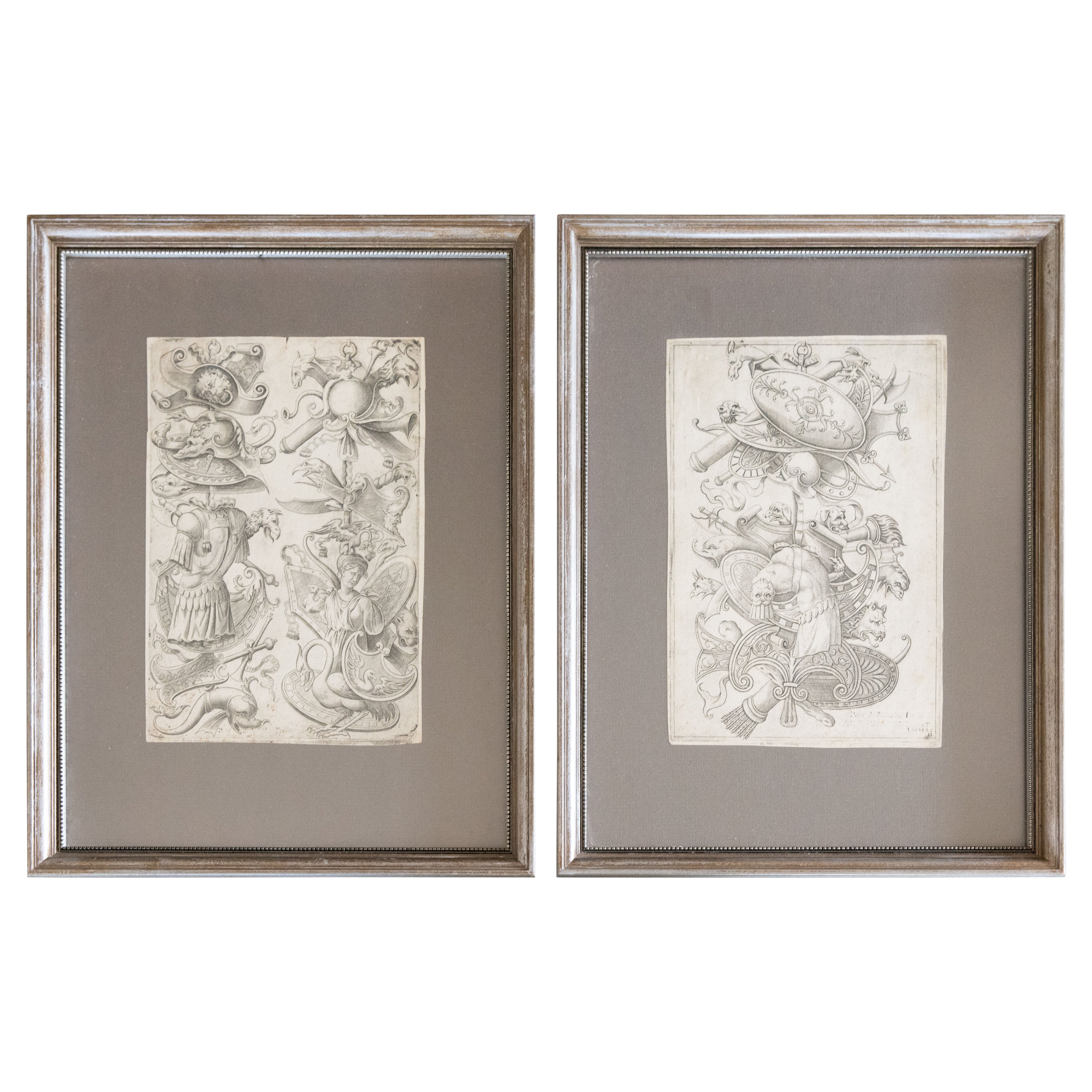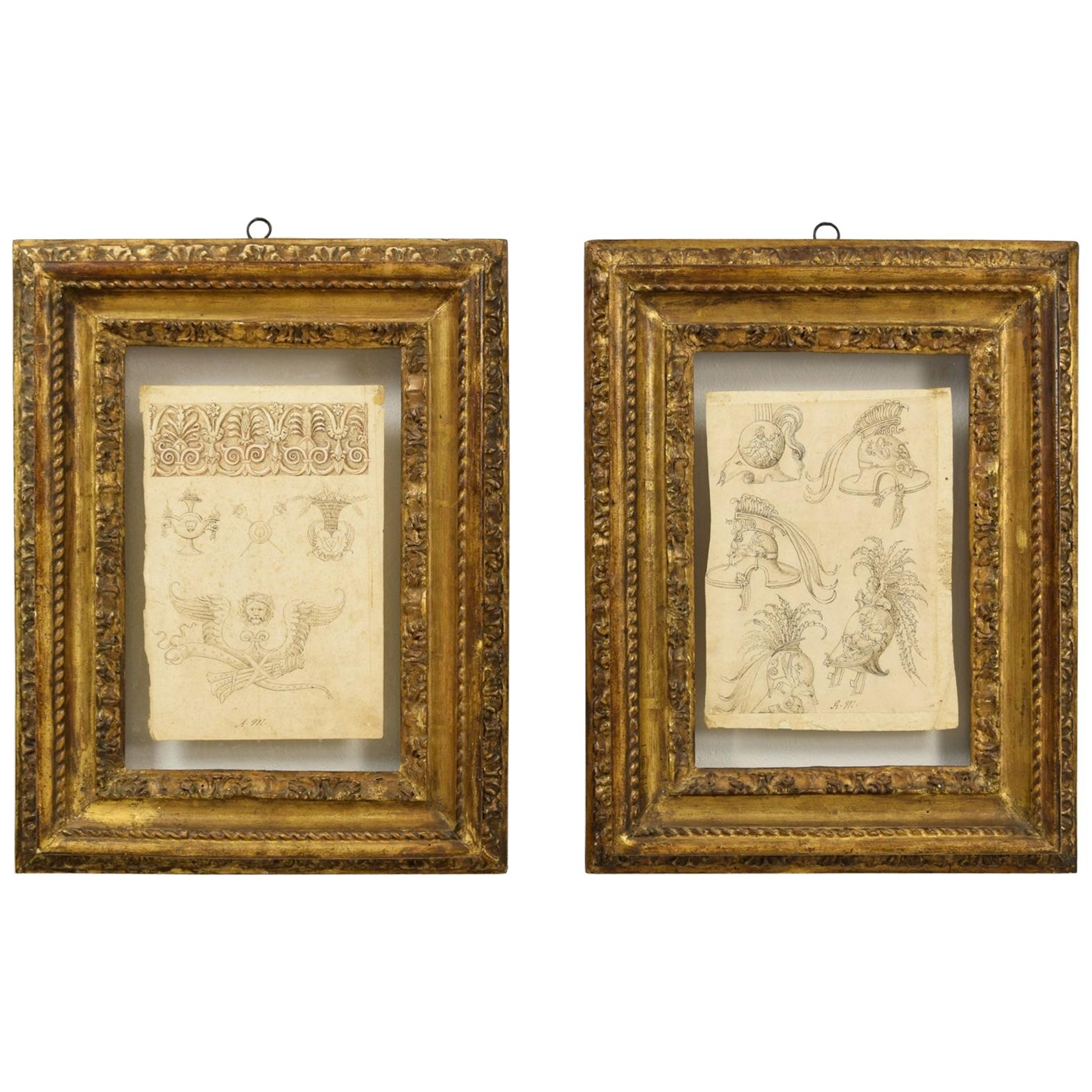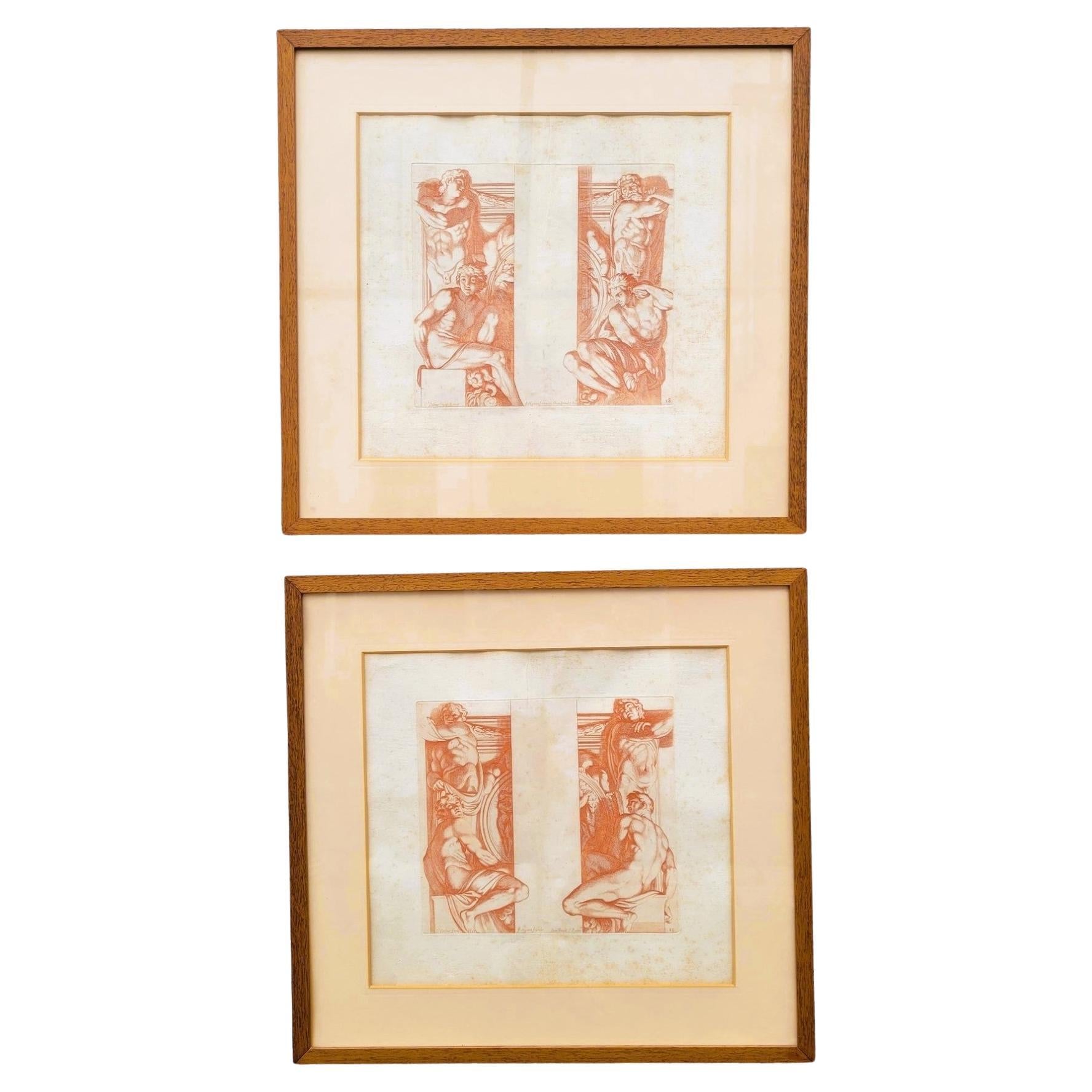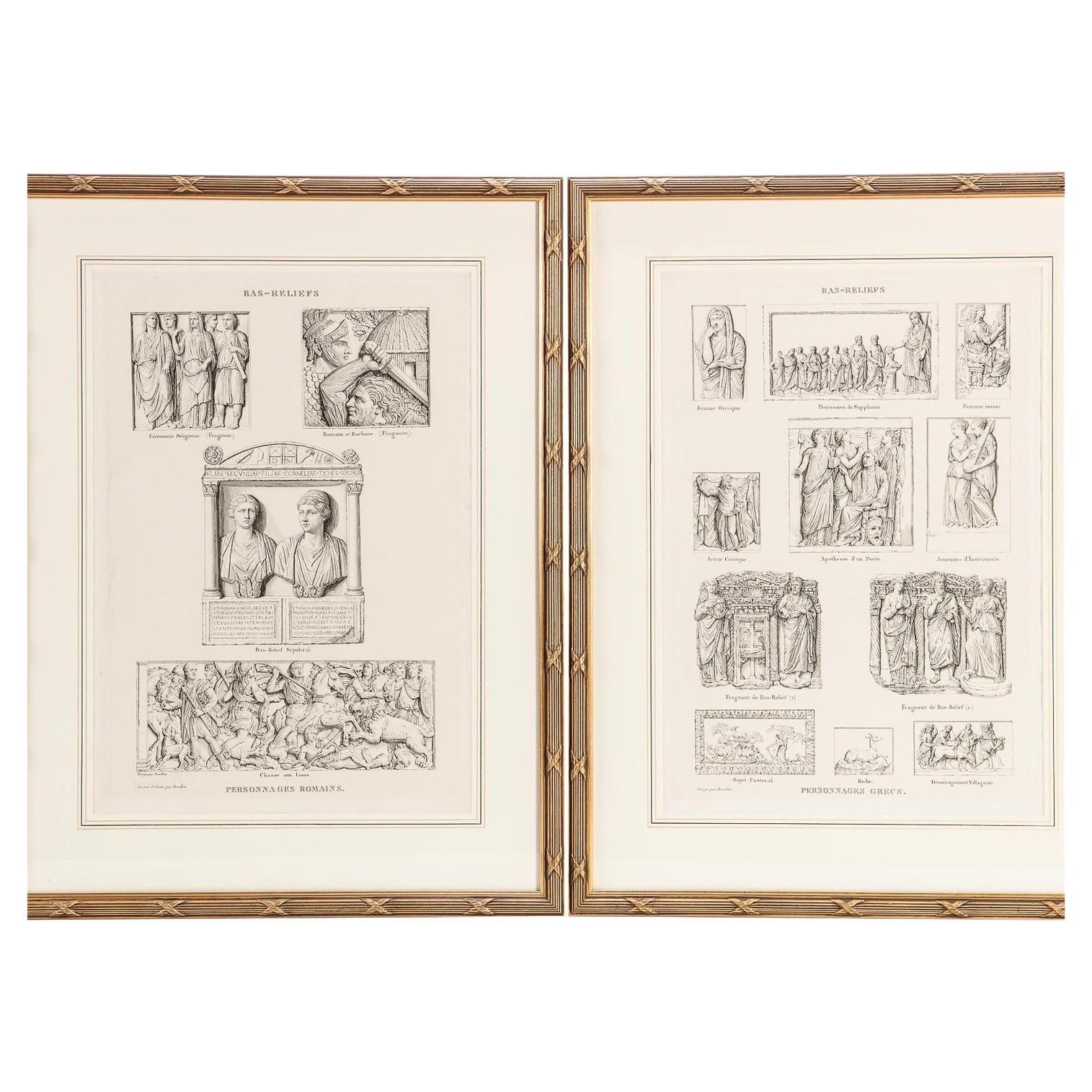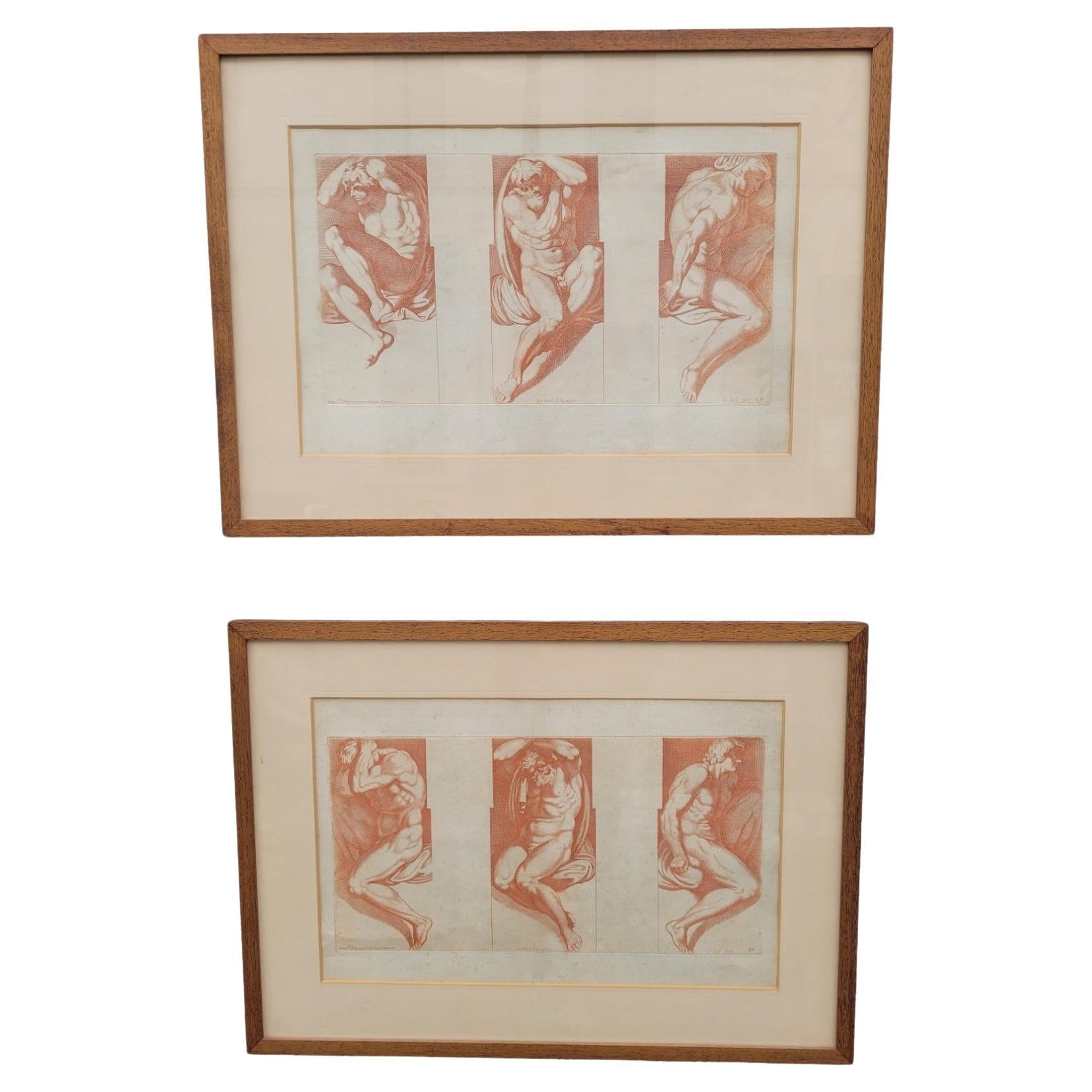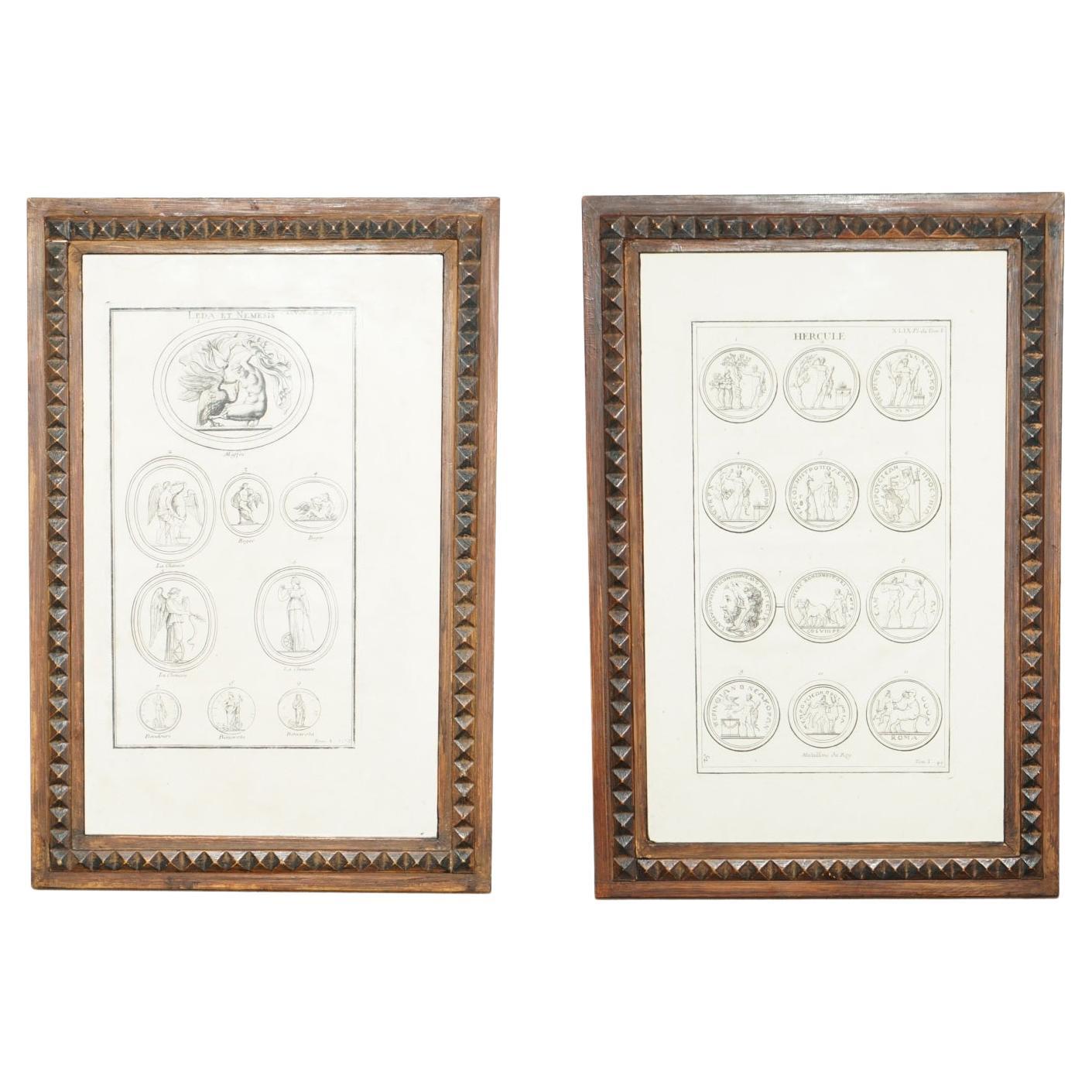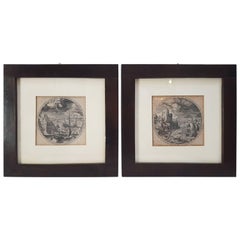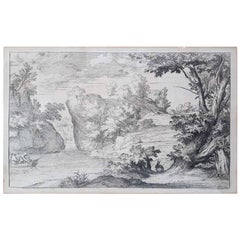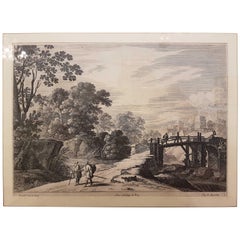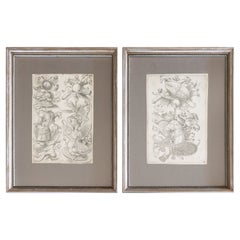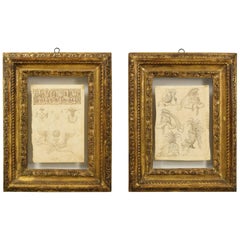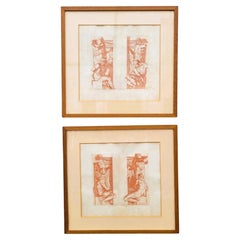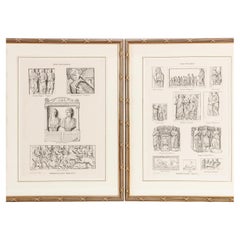Items Similar to 17th Century Pair of Burin Prints by Giovanni Battista Vanni, Italy, 1642
Want more images or videos?
Request additional images or videos from the seller
1 of 14
17th Century Pair of Burin Prints by Giovanni Battista Vanni, Italy, 1642
$2,126.61per set
£1,594.03per set
€1,800per set
CA$2,921.61per set
A$3,261.70per set
CHF 1,709.08per set
MX$39,926.40per set
NOK 21,705.35per set
SEK 20,465.39per set
DKK 13,702.26per set
Shipping
Retrieving quote...The 1stDibs Promise:
Authenticity Guarantee,
Money-Back Guarantee,
24-Hour Cancellation
About the Item
A beautiful pair of burin engravings depicting "Saint Bernardo degli Uberti" and "Saint Hilary of Poitiers" two of the patron saints of the city included in the base of the cupola ( dome ) of Parma cathedral frescoed by Antonio Allegri known as Correggio (Correggio, August 1489-Correggio 5 March 1534) between 1524 and 1530. Admirable work by the great master in which his genius as a forerunner of the Baroque is fully seen.
In 1642 Giovanni Battista Vanni etched a series of fifteen plates from Correggio's frescoes.
Giovanni Battista Vanni was born in Pisa around 1599; he studied successively under Jacopo da Empoli, Aurelio Lomi, and Matteo Rosselli, and then became a disciple of Cristofano Allori. He is better known as an engraver than as a painter. From 1624 to 1632, he lived in Rome, then returning to Florence after visiting Venice.
In addition to the series of prints from Correggio of which we present this pair, he also engraved Paolo Veronese's Marriage at Cana. His works include a Triumph of David, now in the palace of the Alberti in Prato, an Annunciation for the church of San Francesco di Paola in Florence and a Saint Sebastian Healed at the Feet of the Virgin for the church of San Giovanni dei Fiorentini in Rome. He frescoed a Meal in the house of the Pharisee for a refectory attached to the Church of Santa Maria del Carmine, Florence.
He died at Florence in 1660.
Please note: the release of the authorization for export by the Italian Ministry of Cultural Heritage takes about six weeks from the day of purchase.
- Creator:Giovanni Battista Vanni (Author),Antonio da Correggio (Artist)
- Dimensions:Height: 22.45 in (57 cm)Width: 17.33 in (44 cm)Depth: 0.04 in (1 mm)
- Sold As:Set of 2
- Style:Baroque (Of the Period)
- Materials and Techniques:Paper,Other
- Place of Origin:
- Period:
- Date of Manufacture:1642
- Condition:Wear consistent with age and use.
- Seller Location:Cagliari, IT
- Reference Number:1stDibs: LU3136333282082
About the Seller
4.9
Gold Seller
Premium sellers maintaining a 4.3+ rating and 24-hour response times
Established in 1934
1stDibs seller since 2017
104 sales on 1stDibs
Typical response time: 13 hours
- ShippingRetrieving quote...Shipping from: Cagliari, Italy
- Return Policy
Authenticity Guarantee
In the unlikely event there’s an issue with an item’s authenticity, contact us within 1 year for a full refund. DetailsMoney-Back Guarantee
If your item is not as described, is damaged in transit, or does not arrive, contact us within 7 days for a full refund. Details24-Hour Cancellation
You have a 24-hour grace period in which to reconsider your purchase, with no questions asked.Vetted Professional Sellers
Our world-class sellers must adhere to strict standards for service and quality, maintaining the integrity of our listings.Price-Match Guarantee
If you find that a seller listed the same item for a lower price elsewhere, we’ll match it.Trusted Global Delivery
Our best-in-class carrier network provides specialized shipping options worldwide, including custom delivery.More From This Seller
View All17th Century Pair of Etchings by Theodoor Van Thunlden from Rubens, Antwerp 1642
By Peter Paul Rubens, Theodoor van Thulden
Located in Cagliari, IT
"Arch dedicated to Hercules" and "Arch dedicated to Bellerophon"
Splendid and very rare etchings belonging to a suite of subjects executed for the preparations of the "Celebrations for the entry into Antwerp of the Cardinal-Infante Ferdinando of Habsburg-Spain on 17 April 1635".
The sketches for the decorations were all drawn by Sir Peter Paul Rubens and the execution of the etchings was entrusted to Van Thulden.
Bottom left: P.P. Rubens. Bottom right: G. Gervatius (who was commissioned to bring together the illustrations of the arches in a special volume) and Van Thulden.
Laid paper with watermark - copper imprint - margins - excellent condition.
At the end of 1634 Peter Paul Rubens (1577-1640) was invited to make a series of drawings to decorate the city of Antwerp on the occasion of the solemn entry of the infant cardinal Ferdinand of Habsburg (1609-1641) who, after his death of Archduchess Isabella Clara Eugenia (1633), Spanish governor of the southern Netherlands, had been elected as his successor. Generally in these circumstances, the itinerary was articulated through a series of stations and the city - in its main urban hubs - was adorned with decorations and ephemeral apparatuses which, without solution of continuity, covered the facades of the palaces, churches and convents facing the parade axis of the celebratory itinerary, testifying to the participatory role of the various public and private institutions that took part in the feast1. As had happened for the entrances of Charles V in 1520, of Philip II in 1549 and of the archdukes Albert and Isabella in 1599, also in this case, on 17 April 1635, the most important streets and squares of Antwerp were enriched with arrangements: temporary altars, four scenarios, a portico and large triumphal arches built in wood, over twenty meters height, decorated with paintings, sculptures and allegorical scenes. The references to the ancient alluded in this case to the greatness of the Habsburgs and to the merits of Ferdinand for the victory obtained over the Protestant armies of Sweden and their German allies. The choice to use the triumphal arch has its roots in the "city of the popes" and must be read as a connection with the triumphal and modern arches, with Rome and with the "possession" ceremony, placing the emphasis on its centuries-old use . In the elaboration of the drawings and sketches Rubens proved to be a true connoisseur of architecture, but what is most surprising about the artist is the casual use of architectural language and fidelity to sixteenth-century Roman models. In order for the memory of these works to be perpetuated over time, some artists were commissioned to etch the ephemeral apparatuses and, under the guidance of the painter Theodor van Thulden...
Category
Antique 17th Century Belgian Baroque Prints
Materials
Paper
$2,878 Sale Price
20% Off
16th Century Hieronimus Cock, Pair of Burin from "The Story of Jonas"
By Hieronymus Cock
Located in Cagliari, IT
Beautiful pair of prints from the series "The Story of Jonas" including "The departure of Jonas" and "Jonas and the whale". Printed by Hieronimus Cock on a drawing by Hans Bol (1554-1593).
Hieronimus Cock (Antwerp 1507-1590) was a painter, engraver and print merchant. He was a master and editor of Pieter Bruegel...
Category
Antique 16th Century Belgian Prints
Materials
Copper
17th Century Flaemish Abraham Genoels II "Landscape with Rabbit" Etching
By Abraham Genoels II
Located in Cagliari, IT
Beautiful etching by Abraham Genoels II (Antwerp 1640-1723) from a painting by Adam Frans van der Meulen (Brussels 1844-Paris 1690).
Excellent state of conservation with wide margin...
Category
Antique Late 17th Century Belgian Prints
Materials
Copper
$926 Sale Price
20% Off
17th Century Gabriel Perelle "Landscape" Etching, France, circa 1660
By Gabriel Perelle
Located in Cagliari, IT
A French landscape by Gabriel Perelle. With a modern walnut frame
Gabriel Perelle (Vernon, 1604 - Paris, 1677) was a French engraver, draftsman and printer of topographic views and landscapes.
A pupil of Simon Vouet, Perelle specialized in landscapes with a classical setting, not unlike those of Francisque Millet, although with clearly decorative pretensions. He founded an etching lab, with the collaboration of his sons Nicolas and Adam.
Perelle was also a pupil of Daniel Rabel and produced hundreds of engravings from his drawings, as well as compositions by fellow antagonists such as Israël Silvestre, Paul Bril, Jacques Callot, Michel Corneille the Elder, Jan Asselijn...
Category
Antique 1660s French Baroque Prints
Materials
Paper
$548 Sale Price
20% Off
17th Century Etchingn and Drypoint" Ceres and Phytalus" by Salvator Rosa, 1662
By Salvator Rosa
Located in Cagliari, IT
" Ceres and Phytalus"
To left, Phytalus, kneeling, receives the fig tree from the goddess Ceres, standing to right, as a reward for his hospitality. Etching and drypoint, circa 1662,...
Category
Antique 17th Century Italian Baroque Prints
Materials
Paper
17th Century Jan Van De Velde Print "October" from the Months, 1618
By Jan Van de Velde, Claes Jansz. Visscher (II)
Located in Cagliari, IT
Beautiful burin from the rare suite "The Months" performed by the artist and engraved by Claens Jansz Visscher (1587-19 June 1652).
Very fresh and well contrasted, laid paper with w...
Category
Antique 1610s Dutch Prints
Materials
Paper
$940 Sale Price
20% Off
You May Also Like
Set of 2 Framed Antique Italian Neoclassical 1553 Engravings by Antonio Lafreri
By (After) Caravaggio
Located in Pearland, TX
A fine antique set of two Italian Neoclassical engravings from Antonio Lafreri's edition in 1553, copied from the original engravings of Polidoro da Caravaggio (1499 – 1543). These f...
Category
Antique 16th Century Italian Neoclassical Decorative Art
Materials
Glass, Wood, Paper
17th Century, Pair of Italian Ink Drawings on Paper with Studies for Grotesques
Located in IT
17th century, pair of ink drawings on paper with studies for grotesques, friezes and helmets.
Painter of central Italy of the 17th century, signed with monogram “A.M.”.
Measurements: cm L 45.5 x H 59.5 x 5.5; cm 22 x 33 / cm L 46.5 x H 59 x 5.5; cm 22.5 x 31.5
The pair of sheets, in good condition, is framed by antique frames in carved and gilded wood. They show some china studies with some studies for different subjects. Specifically, the first sheet represents the design of a frieze of Renaissance taste under which are some studies probably referring to a family coat of arms. Below the center is a monogram “A.M.”.
The sheet is also worked on the back in which are drawn some articulated elements of decoration in the style of the Renaissance grotesque...
Category
Antique 17th Century Italian Baroque Drawings
Materials
Paper
After Carracci, Atlantes from the Farnese Palace, 2 Engravings, 17th Century ?
By Annibale Carracci
Located in MARSEILLE, FR
These engravings, imitating the red chalk technique, represent the preparatory work for the Atlantes in the Farnese Gallery in Rome, according to Carracci. There we find the mentions...
Category
Antique 17th Century French Renaissance Prints
Materials
Paper
Pair of 18th C Style Pierre Bouillon Engraving Prints of Roman & Greek Friezes
Located in LOS ANGELES, CA
18th Century style Pierre Bouillon neoclassical engraving Prints of Roman & Greek Friezes. Beautifully framed.
Additional information:
...
Category
Early 20th Century Neoclassical Prints
Materials
Giltwood
$1,120 Sale Price / set
20% Off
After Carracci, Atlantes from the Farnese Palace, 2 Engravings, 17th Century ?
By Annibale Carracci
Located in MARSEILLE, FR
This pair of engravings is made in the sanguine style, using red chalk. They represent the preparatory work for the Atlanteans of the Farnese Gallery in Rome, according to Carracci. ...
Category
Antique 17th Century French Renaissance Prints
Materials
Paper
Pair of Bernard De Montfaucon Paris 1719 L'antiquite Original Grand Tour Prints
By Bernard de Montfaucaon
Located in West Sussex, Pulborough
We are delighted to offer for sale this lovely pair of original copper plate prints dating to 1719 by Bernard De Montfauucon of Paris.
Dom Bernard de Montfaucon, O.S.B. (French: [d? m?~fok?~]; 13 January 1655 – 21 December 1741) was a French Benedictine monk of the Congregation of Saint Maur. He was an astute scholar who founded the discipline of palaeography, as well as being an editor of works of the Fathers of the Church. He is regarded as one of the founders of the modern discipline of archaeology
Montfaucon was born on 13 January 1655 in the Castle of Soulatgé, a small village in the southern town of Corbières, then in the ancient Province of Languedoc, now in the modern Department of Aude. Other sources claimed his birth date is in 16 January, the most accepted date. After one year he was moved to the Castle of Roquetaillade, residence of his family. When he was seven, he was sent to Limoux, to the college run by the Fathers of Christian Doctrine
Montfaucon served in the French army as a volunteer and participated in the Franco-Dutch War of 1673. He was a captain of grenadiers and made two campaigns under the command of Marshall Turenne, participated in the Battle of Herbsthausen and fell ill in Saverne in Alsace. Because of his infectious illness he made a vow to Our Lady of Marceille to give one hundred livres to her sanctuary in Limoux and to become a monk, if he was able to return to his country as a result of her intervention.
After the death of Montfaucon's father at the Château de Roquetaillade, in 1675 he entered the novitiate of the Benedictine monastery of Bream in Toulouse. There he learned several ancient languages: Greek, Hebrew, Chaldean, Syriac, and Coptic.
In 1687 Montfaucon was called to the Abbey of Saint-Germain-des-Prés and he started to work on an edition of the works of the Greek Church...
Category
Antique 1710s French Grand Tour Prints
Materials
Wood, Paper
